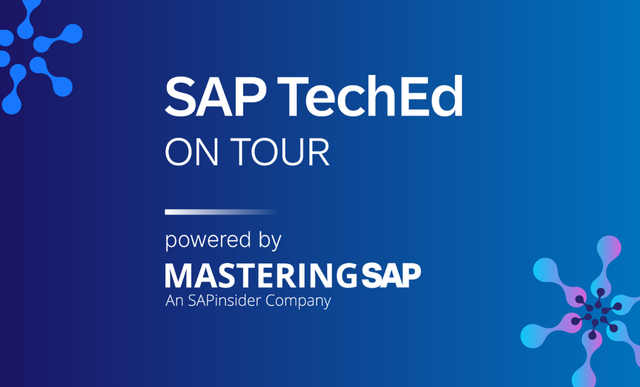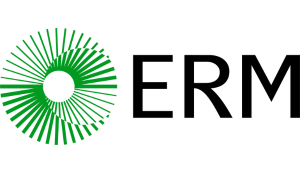SAP Risk Management
Filter By
Browse By
- SAP Analytics and AI
- SAP Application Development and Integration
- All SAP Application Development and Integration
- SAP ABAP
- SAP ABAP Development Tools
- SAP ABAP Test Cockpit
- SAP API Management
- SAP BAPI
- SAP Basis
- SAP BRF
- SAP Business Application Studio
- SAP CMS
- SAP Design Studio
- SAP Development Tools
- SAP DevOps
- SAP EAI
- SAP EDI
- SAP Extension Suite
- SAP Fiori
- SAP Fiori Elements
- SAP Integration Suite
- SAP Low Code Application Development
- SAP Low Code Automation
- SAP Netweaver
- SAP Release Management
- SAP UI5
- SAP Web Application Server
- SAP Web IDE
- SAP Business Process Management
- SAP Center of Excellence
- SAP CIO
- SAP Customer Experience
- SAP Data and Data Management
- All SAP Data and Data Management
- SAP BW
- SAP BW/4HANA
- SAP Crystal Reporting
- SAP Data Archiving
- SAP Data Center
- SAP Data Governance
- SAP Data Integration
- SAP Data Migration
- SAP Data Quality
- SAP Data Services
- SAP Data Strategy
- SAP Data Visualization
- SAP Data Warehouse Cloud
- SAP DMS
- SAP Document Control
- SAP EIM
- SAP ETL
- SAP ETL Tools
- SAP HANA
- SAP HANA Administration
- SAP HANA Deployment Infrastructure
- SAP HANA Studio
- SAP Master Data
- SAP Master Data Governance
- SAP MDM
- SAP Enterprise Architect
- SAP Enterprise Asset Management
- SAP ERP
- SAP Finance
- All SAP Finance
- SAP Accounting
- SAP AR AP
- SAP Asset Accounting
- SAP Billing Systems
- SAP BPC
- SAP BRIM
- SAP Cash Management
- SAP Central Finance
- SAP Controlling
- SAP COPA
- SAP Cost Center Accounting
- SAP e-invoicing
- SAP FICO
- SAP Finance Automation
- SAP Financial Closing Cockpit
- SAP Financial Consolidation
- SAP Financial Planning
- SAP FX Risk
- SAP General Ledger
- SAP Global Tax Management
- SAP Hyperion
- SAP Order to Cash
- SAP Payment Processing
- SAP Profitability Analysis
- SAP Rebate Management
- SAP S/4HANA Finance
- SAP Universal Journal
- SAP Governance Risk and Compliance
- SAP Human Capital Management
- SAP Intelligent Technologies
- SAP Platform and Technology
- All SAP Platform and Technology
- SAP Business Technology Platform
- SAP Cloud Connector
- SAP Cloud Integration Platform
- SAP Cloud Migration
- SAP Cloud Platform
- SAP Cloud Providers
- SAP Cloud Strategy
- SAP Container Platform
- SAP Digital Asset Management
- SAP Digital Integration Hub
- SAP Digital Signature
- SAP HANA Enterprise Cloud
- SAP HEC
- SAP Hyperscalers
- SAP Infrastructure
- SAP Messaging
- SAP Smart Forms
- SAP Quality and Testing
- SAP Security
- SAP Spend Management
- SAP Supply Chain Management
- All SAP Supply Chain Management
- SAP APO
- SAP Asset Management
- SAP Business Network
- SAP Digital Manufacturing Cloud
- SAP Digital Twin
- SAP EWM
- SAP IBP
- SAP Inventory Management
- SAP Label Printing
- SAP Logistics
- SAP Manufacturing
- SAP Manufacturing Automation
- SAP MES
- SAP MII
- SAP MM
- SAP MRO
- SAP MRP
- SAP Order Management
- SAP Plant Maintenance
- SAP PLM
- SAP Production Planning
- SAP S&OP
- SAP SD
- SAP SPM
- SAP Supply Chain Planning
- SAP Track and Trace
- SAP Transportation Management
- SAP System Administration
What is SAP Risk Management?
Risk management for a business isn’t just about identifying and eliminating areas of risk. For many organizations, it’s also about making decisions on acceptable levels of risk and establishing hierarchies of risk — what needs to be immediately dealt with and what can wait. Keeping track of all organizational risk in a centralized way makes it easier for companies to analyze risk impacts — this type of centralization is often enabled by technology. SAP Risk Management is one risk management tool within the SAP Governance, Risk, and Compliance (GRC) suite that supports risk identification, assessment, analysis, and monitoring.
What is SAP Risk Management?
Risk management for a business isn’t just about identifying and eliminating areas of risk. For many organizations, it’s also about making decisions on acceptable levels of risk and establishing hierarchies of risk — what needs to be immediately dealt with and what can wait. Keeping track of all organizational risk in a centralized way makes it easier for companies to analyze risk impacts — this type of centralization is often enabled by technology. SAP Risk Management is one risk management tool within the SAP Governance, Risk, and Compliance (GRC) suite that supports risk identification, assessment, analysis, and monitoring.
Risk management tools like SAP Risk Management often provide better visibility into organizational risk and bring together various types of risk into a single place for monitoring. Risk management solutions may include the following features, among others:
- Risk strategy and planning
- Risk identification
- Risk analysis
- Risk monitoring
- Dashboards and graphical views
- Real-time and automated risk monitoring
- Guided workflows to enforce governance rules
There are many sources of risk in an organization, and some vendors provide solutions to address various risk elements. For example, Appsian Security offers tools that bolster risk monitoring around financial transactions. Fastpath offers risk management solutions that focus on multiple areas of risk, including segregation of duties, regulatory compliance, and access risk. RSM’s toolset provides process automation around risk management.
Key Considerations for SAPinsiders:
- Risk events are rising, compounding the need for better risk monitoring and anticipation. Legacy tools and business models don’t typically offer the capabilities needed to properly manage risk in a centralized place. To fix this, companies are now including risk management as part of their digital transformation activities, implementing intelligent technologies and robotic process automation to help improve risk management and other GRC functions.
- GRC teams are stretched, according to our latest research on the state of the GRC market. The most successful organizations are taking pressure off GRC professionals with automation. You should look to automate risk management wherever possible — it’s best for repeatable processes. Risk management tools that automate risk monitoring and reporting reduce manual labor for GRC staff and free them up to do more strategy and planning.
- You can improve risk strategy and decision making across the entire company, from operations through audit, with risk-aware, risk-adjusted management. You should work toward this goal with strategies such as risk training for line-of-business users and by creating an interdisciplinary risk management committee.
984 results
-

Effectively Respond to Your Business Risks and Evaluate Residual Risk Levels
Published: 10/February/2011
Reading time: 14 mins
Examine the fourth phase of the enterprise risk management (ERM) process: risk response allocation. See how in SAP BusinessObjects Risk Management you can distinguish between various response types and involve response owners in a collaborative process to increase accountability for response implementation. In addition to assessing response completeness and effectiveness, you can conduct a residual...…
-

Selective Data Transition vs. Full Migration: Choosing the Right Approach for SAP S/4HANA
Reading time: 17 mins
Migrating from SAP ECC to SAP S/4HANA involves choosing between Selective Data Transition, which allows for flexible and tailored data migration, and Full Migration, which fully integrates existing systems but requires significant reconfiguration, with specific strategies and thorough preparations critical for successful execution.
-

How to Manage Enterprise Risk in Remote and Digital Environments
Published: 05/May/2021
Reading time: 12 mins
As organizations migrate to SAP S/4HANA as part of their digital transformation effort, they should prioritize governance, risk, and compliance (GRC). The Institute of Internal Auditors (IIA) has developed a Three Lines Model to help with that journey. First-line roles include operation and support functions; second-line roles encompass corporate risk, compliance, and quality assurance functions;…
-
-

Gauge a Company’s Risk Exposure Using Market Risk Analyzer
Published: 19/June/2015
Reading time: 31 mins
Learn how to implement SAP’s Market Risk Analyzer. The analysis reports in Market Risk Analyzer help an organization or, more specifically, a treasury department, to assess and quantify the risks of its financial positions. Once the risks of an organization are analyzed and quantified, they can be more easily controlled. The inputs to Market Risk...…
-

Case Study: Automated Transport Management in hybrid SAP S/4HANA landscape
Reading time: 2 mins
Benefit from automated Transport Management also after SAP S/4HANA migration C&A is one of the leading retailers in Europe and employs more than 31,000 people in 18 European countries. As the central IT service provider for the C&A company, C&A Services – like many others – is experiencing a continuously increasing volume of SAP transport…
-

SAP Access Control Implementation: The Myths, Truths, and Tricks (Part 1)
Published: 14/December/2015
Reading time: 22 mins
Gain an understanding of supported and unsupported functionalities in the SAP Access Control system. See how to configure the system correctly to achieve your defined business requirements. Key Concept Myth often refers to certain assumptions or thoughts about the capability of a tool or product, either positive or negative, with or without an empirical basis...…
-

Configure and Implement the Proper Internal Controls Up Front for an Easier Audit
Published: 15/December/2008
Reading time: 30 mins
Having to go back and change your SAP system or your related business processes to deal with audit concerns takes time away from your daily operations and results in unnecessary distractions. By configuring your SAP system appropriately and designing your related business processes to effectively address your business risks, you can save significant effort. This...…
-
-

Newcomer IPPM Debuts an Asset Lifecycle Portfolio and Project Management (PPM) Solution
Published: 27/November/2024
Reading time: 3 mins
IPPM, a new entrant in enterprise asset management, aims to bridge gaps in SAP solutions by integrating estimating, cost forecasting, scheduling, and financial management through an AI-enhanced software that aligns project management with finance, ultimately improving governance and real-time finance updates.
-

Increase Enterprise Risk Management Performance with SAP BusinessObjects Risk Management 10.0
Published: 18/April/2012
Reading time: 10 mins
Learn how to leverage SAP BusinessObjects Risk Management 10.0 advances and best practices to create greater satisfaction with executives and other stakeholders in enterprise resource management (ERM) program activities. Key Concept SAP BusinessObjects Risk Management 10.0 enables executives to have a broad, enterprisewide view of risk programs and insight into risk drivers and key risk...…
-

Integrated Security Solutions to Mitigate Risks on All Fronts
Published: 26/April/2016
Reading time: 5 mins
The new digital economy brings an unprecedented flow of data into the enterprise, which in turn leads to an unprecedented governance, risk, and compliance (GRC) challenge. As organizations struggle to sort through this data, cybercriminals are working just as hard to steal it. In order to stay secure, businesses need integrated GRC solutions that not…
Become a Member
Unlimited access to thousands of resources for SAP-specific expertise that can only be found here.
Upcoming Events
-

SAP TechEd on Tour, powered by Mastering SAP
November 12 - 14, 2025
Sydney, New South Wales
Australia
View Event
Related Vendors
Your request has been successfully sent

